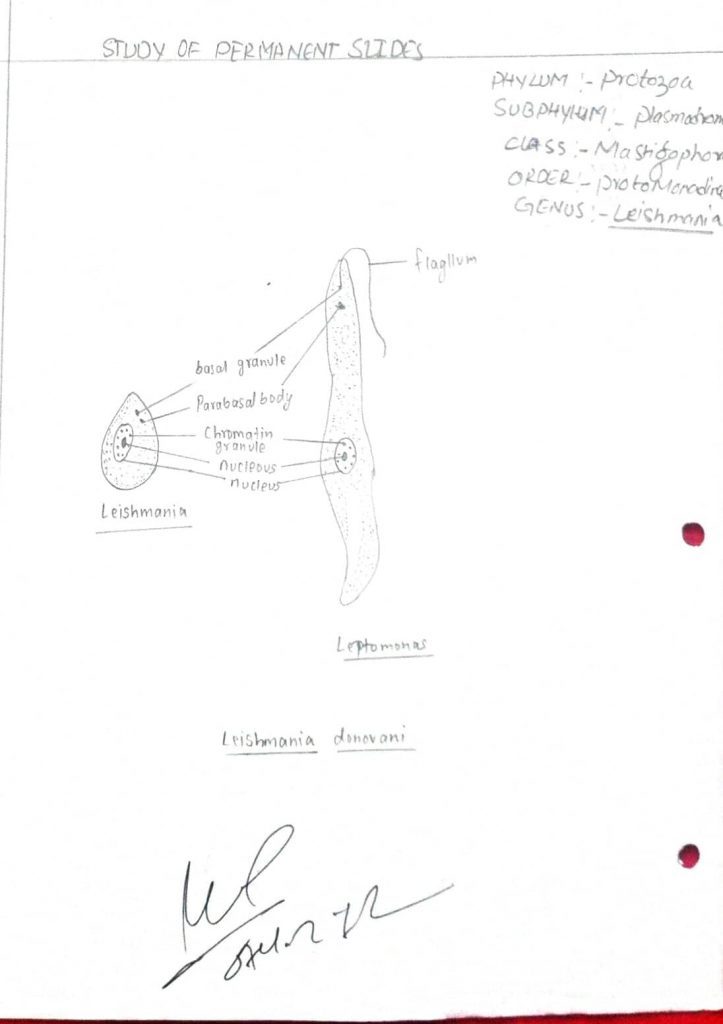Habit and Habitat
Leishmania donovani is an intracellular parasite found in human bone marrow, spleen, liver, and blood-sucking sandflies’ intestines (phlebotomus)
Comments
1. Leishmania is a parasite with a tiny, spherical or oval form. It lacks a flagellum.
2. It has a periplast or pelide-type limiting membrane.
3. The cytoplasm is differentiated into ectoplasm and endoplasm.
4. Endoplasm contains an oval nucleus, rod-shaped or dot liked kinetoplast and a parabasal body
5. Lack of flagellum and undulating membrane
6. Reproduction is usually done by binary fission
7. It either undergoes a transformation within the intermediate host or progresses to a flagellate leptomonas stage. A sand fly serves as a transitory host.
8. The nucleus is positioned in the middle of the leptomonas stage.
Economic Importance
Leishmania donovani causes a disease named Kala Azar or visceral leishmania. It is a particular type of fever that is characterized by spleen and liver enlargement, as well as by an erratic fever, anemia, and leukopenia.

